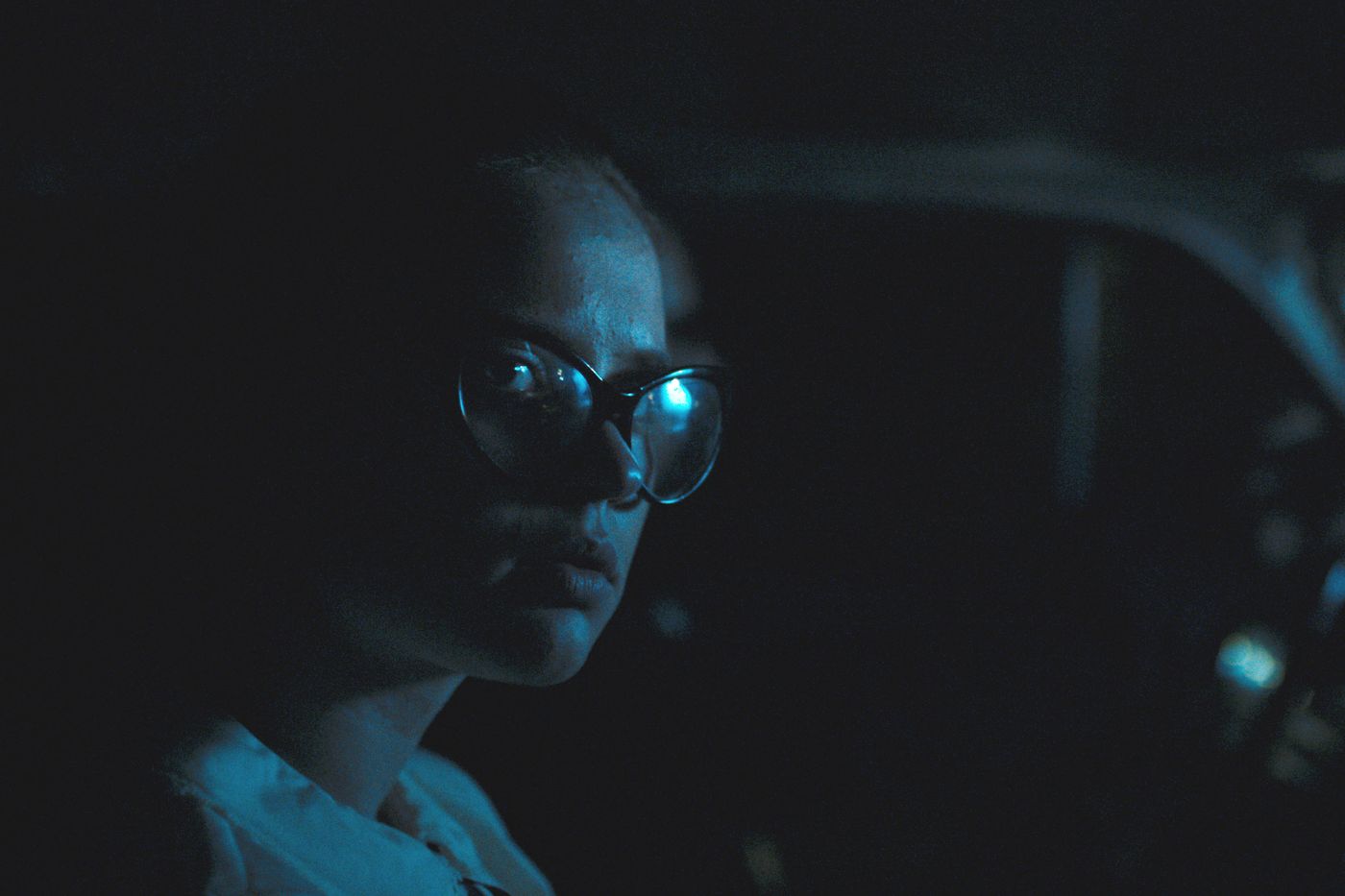
The Vast of Night Makes Retro Sci-Fi Feel Startlingly Fresh
by Alison WillmoreThere’s a shot in The Vast of Night that I just can’t stop thinking about. It’s maybe a half hour into the film, around when one of the two teen protagonists, a switchboard operator named Fay (Sierra McCormick), takes a smoke break after a jittery encounter with an enigmatic broadcast inexplicably coming through one of her lines. The camera pushes past her through the open door and out into downtown Cayuga, New Mexico, population 492, heading along the main drag and picking up speed as it leaves behind the small stretch of closed shops and goes off road. It travels past scrubby trees and houses aglow in the dark, eventually curving through the parking lot of the high school, where most of the town has gathered to watch a basketball game. It moves with apparent seamlessness into the gym and onto the court, taking a 360-degree turn to survey the hollering attendees before hovering behind the announcers and heading up the bleachers. Then it goes right out a window and drifts over to the outpost of the local radio station, behind which the DJ, Everett (Jake Horowitz), has stepped out for a cigarette of his own.
It’s the kind of how-the-hell-did-they-do-that camera stunt — a go-kart was apparently involved — that can actually knock a viewer out of a movie entirely by calling attention to its own showmanship. But that’s not the case with The Vast of Night, a micro-budget sci-fi film that marks the debut of Andrew Patterson, directing off a script by James Montague and Craig W. Sanger. Instead, that long take serves the burgeoning mood of dread and wonder so well that it could slip by unremarked upon, just one of a few of the big swings the filmmakers take over the course of a nimble 91 minutes. The way the lens keeps low to the ground like a dog is subtly menacing, as though the camera has a will and a curiosity of its own. The way the shot links the spaces in which the two main characters are working while the rest of their community is gathered elsewhere shows their solitary geographies while emphasizing how audio connects them. Patterson and his crew may not have been working with much by way of resources, but their movie rarely feels threadbare or limited in its scope. Instead, it’s thrillingly present in its time period — the 1950s, which is why so many characters light up with the unconcern of people at least a decade away from hearing about causal links to cancer.
And that sense of immediacy is essential to the salty-sweet contrast of the film, which combines a throwback premise with an unstintingly modern sensibility. The Vast of Night is about a possible UFO sighting over the small town, an idea so Twilight Zone that the film itself acknowledges as much by framing its story as an installment of a series called Paradox Theater. Cayuga first flickers into view on an old television set, before filling the screen and being given the slightly yellowed tint of an aged photograph. But the film desires less to indulge in nostalgia than to get beyond it. The community it depicts is neither idealized nor gawked at over a distance, just lived in and alive in all its closeness and its cruelties and its undercurrent of Cold War paranoia — this is atomic bomb country, after all.
Everett, with his radio-trained delivery, and Fay, with her cat’s-eye glasses and ingenue’s eagerness, may come off as retro archetypes at first glance, but a few minutes in their fast-talking company is enough to start filling them out as individuals. Everett is something of a local star, confident and ambitious and happy to break the rules if it’s on behalf of “good radio” that might get him a better gig. Fay is bright, but already seeing her horizons shrink down as she cares for her sister while her mother works nights, with a job on a bigger switchboard the best she can imagine for herself. The duo’s shared yearning to escape the confines of their hometown gets a dark parallel with the incident they find themselves investigating, one that may or may not involve extraterrestrials who’ve abducted humans before — the ultimate leave-taking.
It’s a mystery that unfolds over the course of the evening, with key bits of evidence boldly delivered in two lengthy monologues that reveal that even in cases of aliens among us, it’s the marginalized who end up being the most vulnerable. The second of those testimonials, delivered by an older woman named Mabel (Gail Cronauer), who’s been living as an outcast for most of her life, is one of the few instances when the movie feels like it’s stretching beyond its means in terms of gravitas. But the first, delivered by an unseen Bruce Davis by way of a call into Everett’s show, is another of those goosebump-inducing bits of filmmaking audacity. As Davis’s character, Billy, speaks, there’s a slow pan out from a flickering shot of a speaker that then fades to black, until we’re just sitting in the dark, rapt, just listening to the audio. It’s an homage to radio dramas, maybe, but also works as a reminder that while film is a visual medium, sometimes sound can be enough to sustain you. It’s a sound, after all, that opens up the cloistered world that Everett and Fay are living in, exposing them to something terrible and awe-inspiring and new.